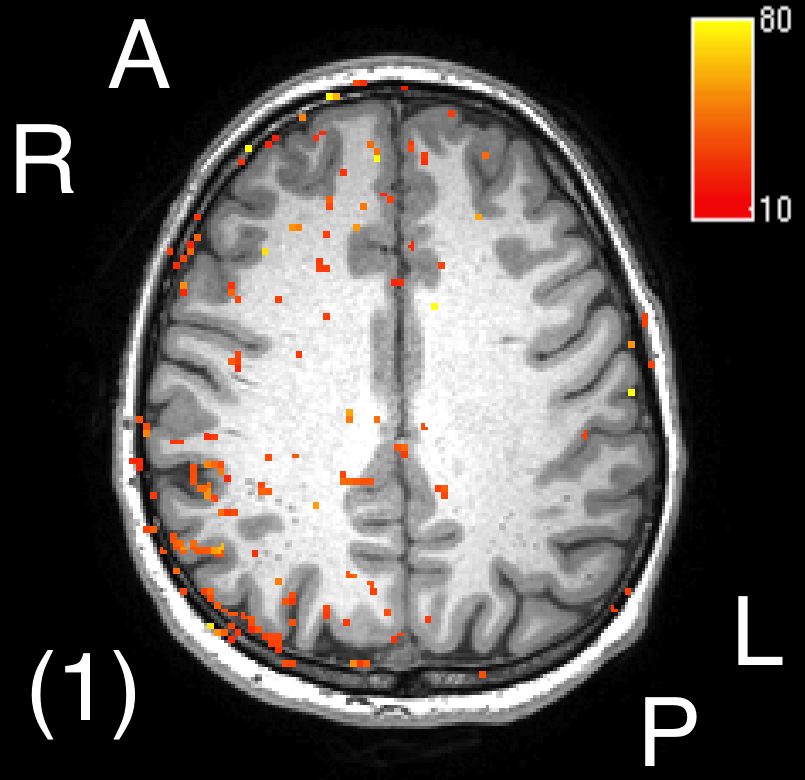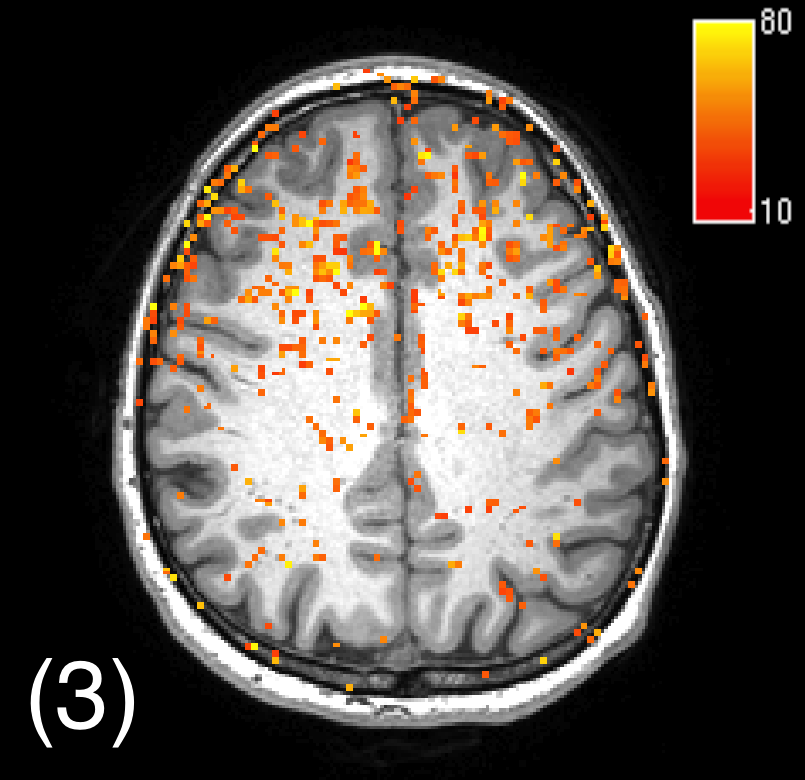orals 5th Asia-Pacific NMR Symposium 2013
Direct mapping of transcranial direct current stimulation effects in fMRI (#41)
Introduction
Transcranial Direct Current Stimulation (tDCS) is a neuromodulatory technique used in clinical neuropsychiatric treatment. Although empirical effects of tDCS are well recorded, the underlying mechanisms of action are still largely unknown. Here we demonstrate a new method for mapping the effects of tDCS on measured T2* signal in a functional Magnetic Resonance Imaging (fMRI) experiment.
Method
We conducted three separate fMRI scans of a single healthy subject undergoing concurrent tDCS: two experiments with active stimulus and one sham. Echo-planar fMRI was acquired for 34 minutes with eyes closed; 1mA tDCS was applied for 10 minutes during the scan for active treatment. The sham treatment fMRI scan involved stimulation for only 30 seconds.
Direct stimulation of cortex evokes signal unlike a typical fMRI scan, so for analysis we discount the short term hemodynamic effects usually modelled in fMRI and instead concentrate on the bulk impulse response signal elicited over many minutes. The challenge in constructing a map of tDCS-evoked changes in T2* fMRI signal is then to distinguish between the evoked signal, and nuisance drift effects from both the scanner and of physiological origin. We use time-series intervention analysis1 for system identification which has been extensively used for statistical and econometric modelling.
Results
Results from intervention analysis of tDCS-fMRI data show different T2* signal changes between the three experiment conditions. The sham condition elicits almost no significant changes across cortex (Fig. 1). The active stimulus tDCS experiments induce signal changes across prefrontal cortex, with higher density of active voxels for the small electrode stimulation (Fig. 2) than when using larger electrodes (Fig. 3).
The results of this analysis are comparable to physics simulation studies of tDCS2 .
Conclusion
We have shown that fMRI is a viable and effective tool to map the direct effects of tDCS on the human brain.



- G. Box and G. Tiao, “Intervention analysis with applications to economic and environmental problems,” Journal of the American Statistical Association, vol. 70, no. 349, pp. 70–79, 1975.
- R. Sadleir, T. Vannorsdall, D. Schretlen, and B. Gordon, “Transcranial direct current stimulation (tdcs) in a realistic head model,” Neuroimage, vol. 51, no. 4, pp. 1310–1318, 2010.